One of the first things I learned when we launched MotivBase is that it’s a lot easier to explain what we do to someone who already has a background in anthropology, semiology or linguistics. Now the challenge of course is that, there aren’t many people in corporate research with that kind of a background. Which means that I can’t simply say – we’re the only company that uses a deep cultural anthropology and post-structuralist model of analyzing consumer language.
Instead I have to recognize that most people would evaluate us in the same way that they’d evaluate any other type of technology-enabled research or analytics provider. And there are a lot of them!
So this post is dedicated to the task of explaining the difference between any other form of data science and trend prediction, and an anthropological approach that is grounded in the decoding of meaning from language.
I’m going to begin with a simple chart that highlights the key differences.
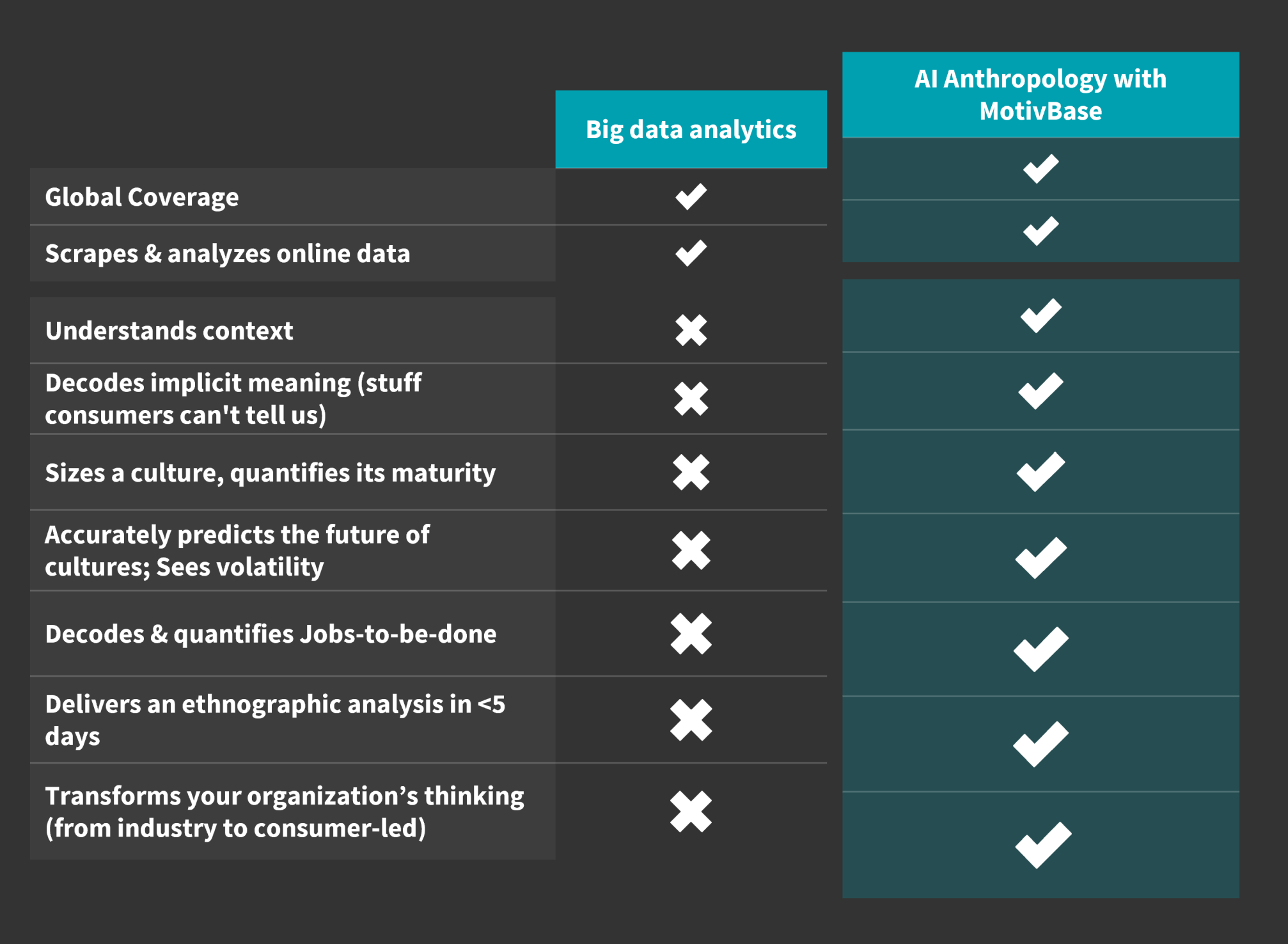
In this chart, I have included some ideas and topics that I’d like to define further:
- Implicit meaning – here’s an article that explains the importance of implicit meaning. Decoding implicit meaning also requires contextual intelligence. This article will provide some background around the notion of context.
- Culture – before we talk about sizing a culture, it’s important to define a culture. A culture is made up of shared meanings and assumptions. These meanings are of course created through a combination of sense experience as well as one’s own internal belief and value systems. But what makes a culture unique is the fact that within it, people hold a set of shared beliefs, meanings, and myths (assumptions and ideas that appear real and truthful to those within that culture).
- Ethnography – The study of a culture. Typically you can look at ethnography through its two component parts. The first being the study of meaning, and the second, being the study of related behavior. Our technology focuses on the first and often overlooked, yet most critical part.
- Consumer-led vs. industry-led thinking is really the distinction between how an organization looks at markets versus how those within the markets (consumers) look at and examine it from within.
Ultimately, no one else can do the following:
Search a topic like “intuitive eating” instantly, on-demand.
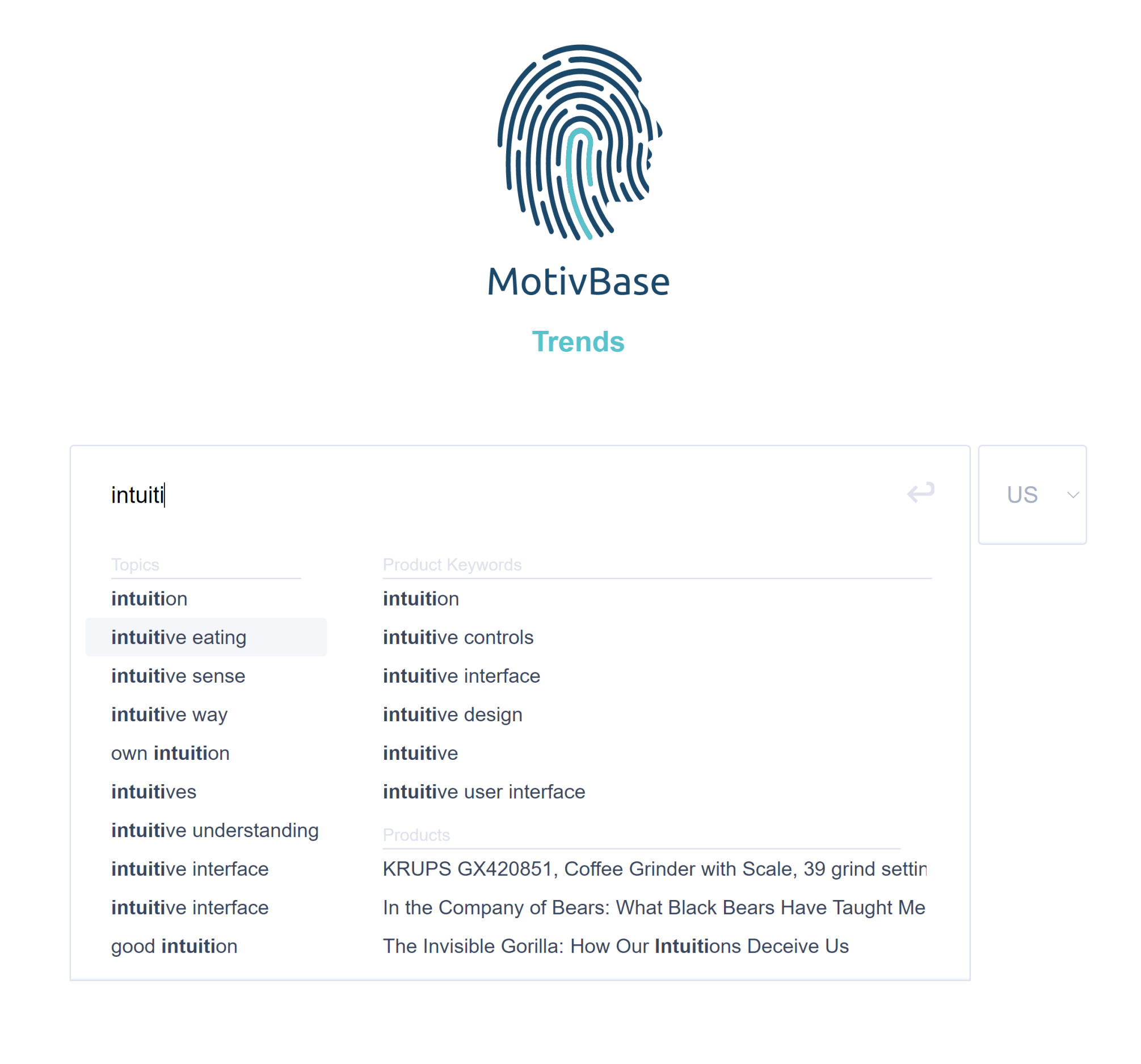
Study the meanings around it immediately.
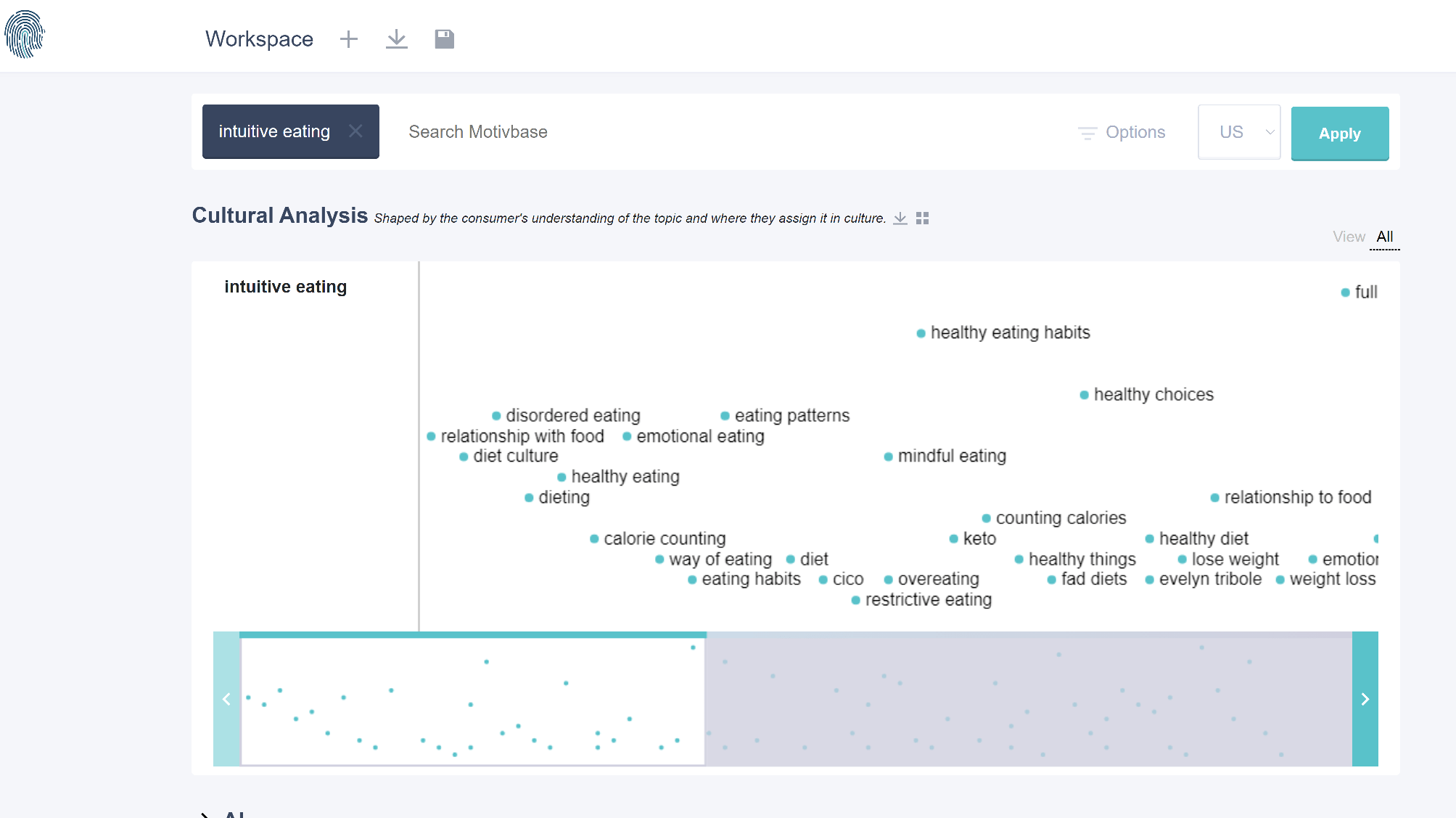
Quantify its relevancy to a population, calculate maturity, predict growth (with 80.4% accuracy), and provide invaluable information on timing – showing when something is ready for mainstream acceptance.
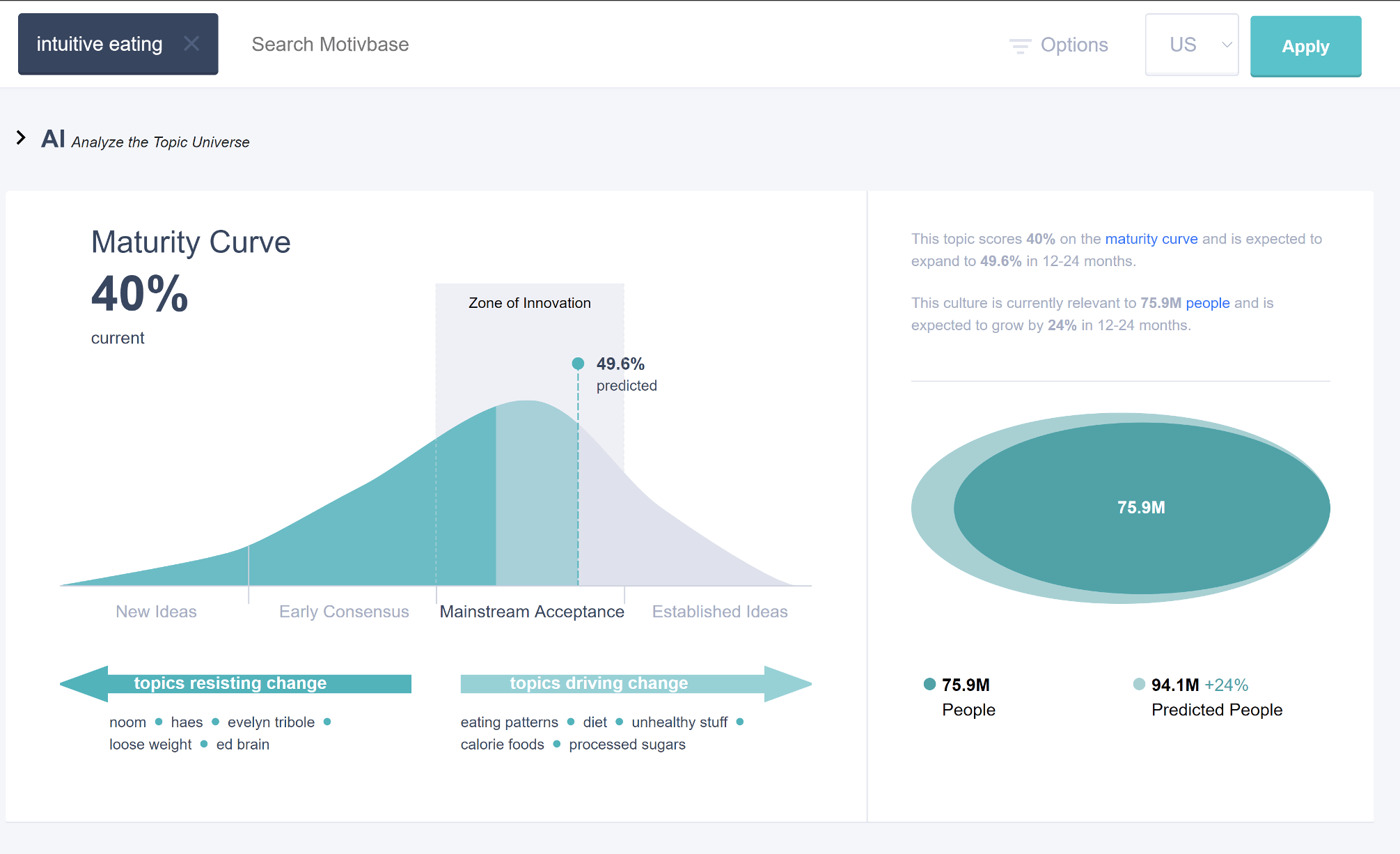
Plus, decode the intrinsic motivations, attitudes, fears, and values of the consumer within the culture.
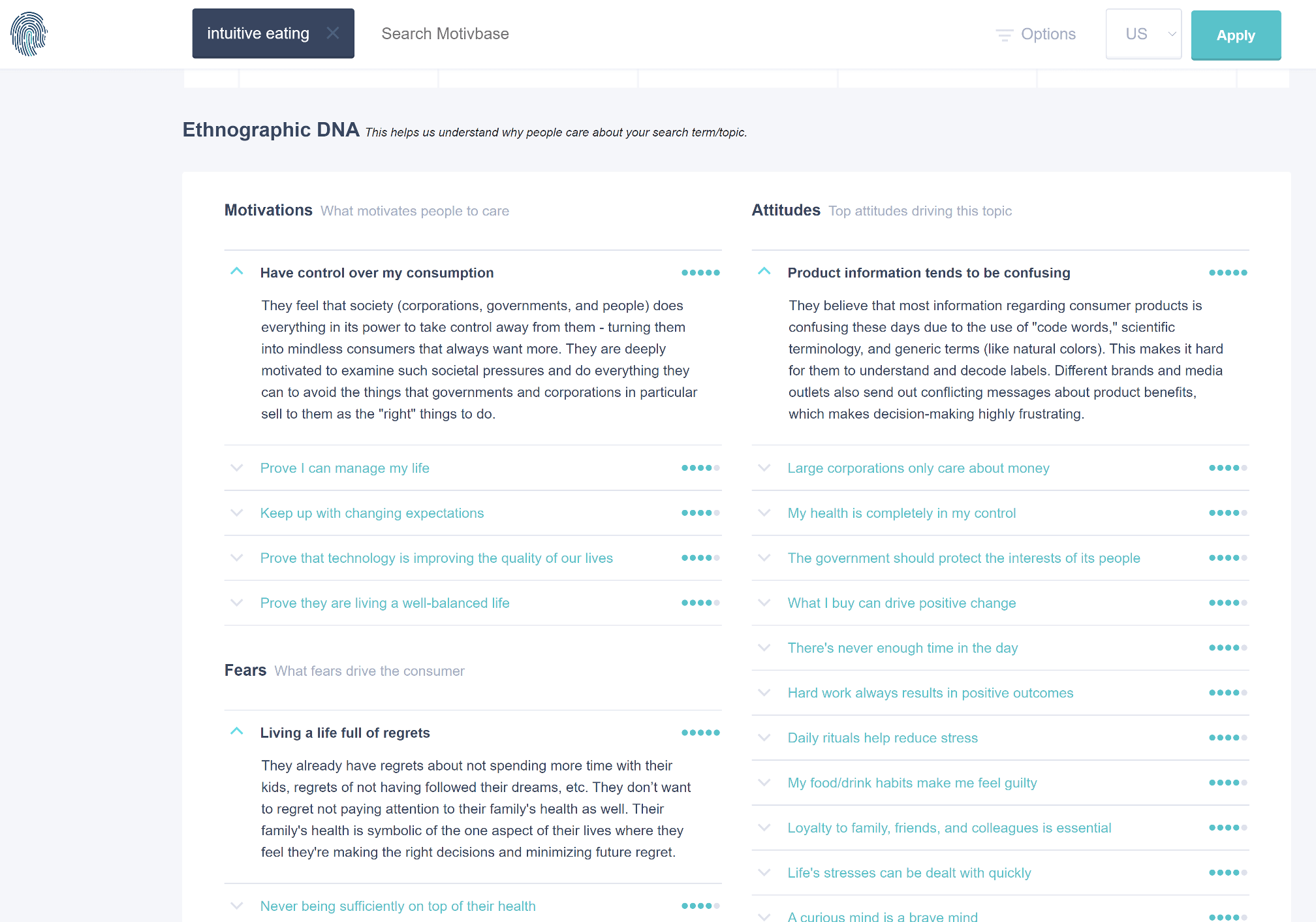
All this is possible because of the incredibly rich and complex foundation in cultural anthropology and semiology that MotivBase is built upon.
Analytics and behavioral science cannot solve a problem that is not always obviously observable to the senses. Meaning is mostly symbolic. It is perceptual. And it is incredibly difficult to pin down unless one takes an approach created by some of the most famous and reputed philosophers in the field of anthropology, semiology, and linguistics.
That is what sets MotivBase apart.
